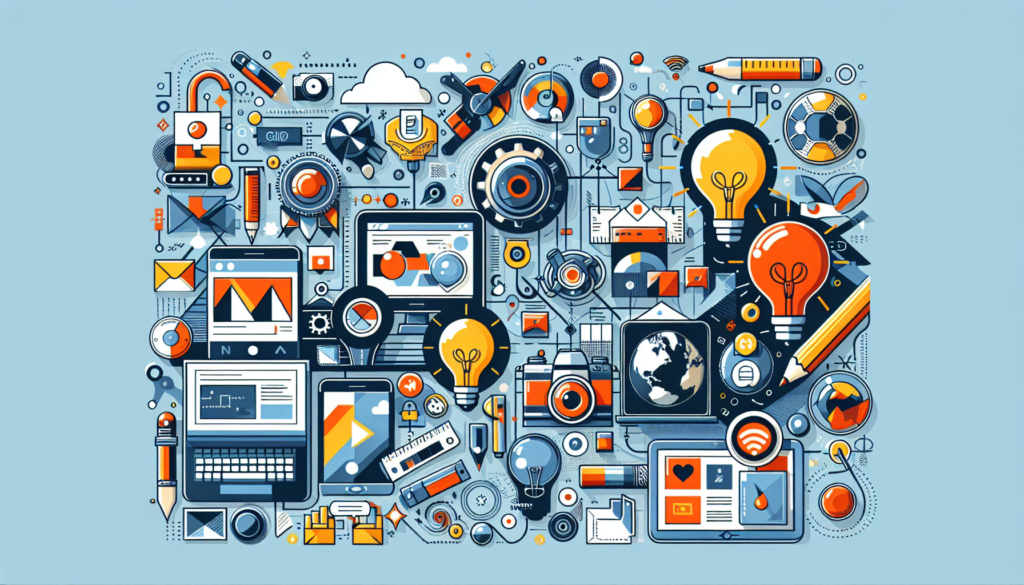Web design, in its constant evolution and influenced by technological and cultural changes, embodies a dynamism that reflects the pulse of the digital world. The current year evidences a fusion of aesthetics and functionality, where emerging trends and cutting-edge technologies coalesce to offer immersive and personalized experiences that meet the expectations of increasingly sophisticated users. In this detailed exploration, we discuss the current trends in web design, examining their theoretical foundation, recent applications, and projecting future trajectories.
Advanced Interfaces and Immersive Experiences
Minimalism and the simplicity of classic design have given way to advanced interfaces that prioritize immersion, through the use of augmented reality (AR) and virtual reality (VR). These technologies, once confined to the entertainment niche, are now establishing themselves as essential tools for creating dynamic web environments that allow users to immerse themselves in shopping, learning, and digital exploration experiences.
Augmented Reality
AR has proven its potential in e-commerce by allowing customers to visualize products in their environment before purchasing. Companies like IKEA have been pioneers in the use of Interactive AR Catalogs where furniture can be placed and viewed in the user’s room through their smartphone, enhancing the shopping experience and reducing uncertainty.
Virtual Reality
Meanwhile, VR is revolutionizing the real estate and tourism sectors, with virtual tours that allow users to visit homes and vacation destinations from the comfort of their own homes. Platforms such as Matterport stand out in this field, offering immersive virtual tour experiences through detailed 3D models.
User-Centered Design
UX Design (User Experience Design) evolves to focus even more on providing an uninterrupted and personalized user experience. The use of AI algorithms to adjust web experiences in real time based on user behavior is a step forward in this respect.
Adaptive Personalization
An emerging practice is the design of interfaces that dynamically adapt their form and content. By collecting data on user interactions, systems can modify the visual and functional presentation of the website, creating an experience that feels unique and personal.
Technology and Web Accessibility
Web accessibility is not only an ethical and legal imperative but also a growing design trend. The use of ARIA tags (Accessible Rich Internet Applications) and compliance with WCAG (Web Content Accessibility Guidelines) are essential to ensure that websites are usable by people with various abilities.
Inclusive Design
Effective web design today must consider adequate contrast, alternative navigation for voice assistants, and accessible content for screen readers, among other features. This reinforces the importance of diversity and inclusion in the web design process.
Web Speed and Performance
Website performance is a critical aspect of the user experience. Lighthouse, an automated Google tool for improving the quality of web pages, provides guidelines for optimizing loading and interactivity. PWAs (Progressive Web Apps) also stand out in this context, providing fast loading speeds and the ability to work offline.
Load Time Optimization
Factors such as lazy-loading, where images and content load only when needed, and AMP (Accelerated Mobile Pages), which prioritize speed on mobile devices, are essential in contemporary web design.
Aesthetics and Movement
Motion Design is shaping up as one of the most dynamic elements in current web design, where subtle animations and smooth transitions are key to guiding user attention and providing feelings of interactivity and life to static content.
Microinteractions
Microinteractions, such as button and toggle animations, have proven their ability to improve usability and provide instant feedback that enhances user comprehension of actions taken within the site.
Big Data and Web Design
The intersection between Big Data and web design enhances the ability for personalization and continuous improvement. Advanced web analytics tools, like Google Analytics and Adobe Analytics, allow designers and developers to understand user behavior and optimize the architecture and content of the website based on concrete data.
Data Visualization
The graphical representation of large volumes of data has also penetrated web design, with techniques and tools that turn statistics into interactive and understandable visualizations for the user.
In practice, the implementation of web design trends should always be grounded in a deep understanding of the end user and their needs. The observation of case studies, like the redesign of Airbnb, shows how the integration of AI that personalizes recommendations significantly improved customer satisfaction. Similarly, rethinking visual aesthetics based on Big Data analysis can offer differentiation and brand relevance.
Finally, when considering the future of web design, possible directions emerge such as the intensification of data-driven design, the expansion of extended reality capabilities, and new forms of interaction through direct neural interfaces. To stay up to date, designers and developers must be attentive to the evolution of technology and the changing demands of a digitalized society. The challenges and opportunities that web design presents require an innovative approach, where creativity and technology go hand in hand to exceed the expectations of users eager for increasingly rich and satisfying digital experiences.

